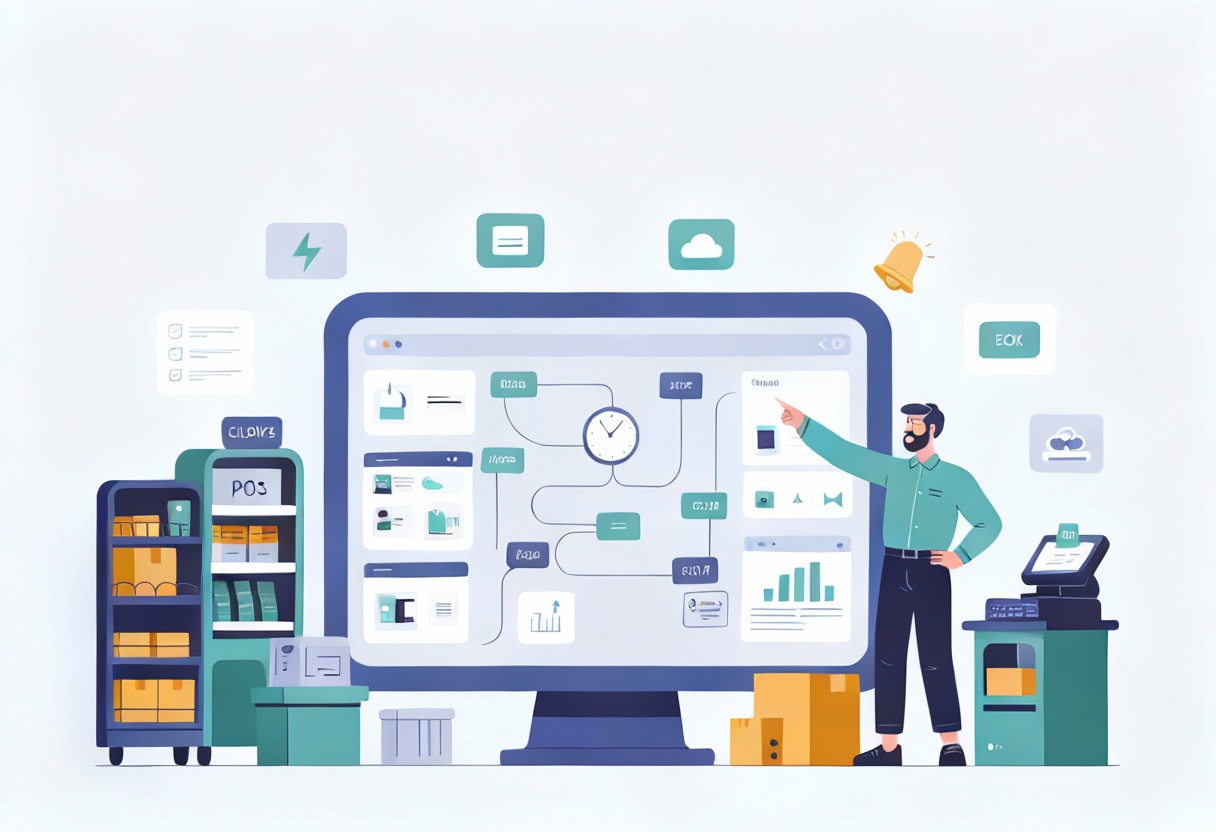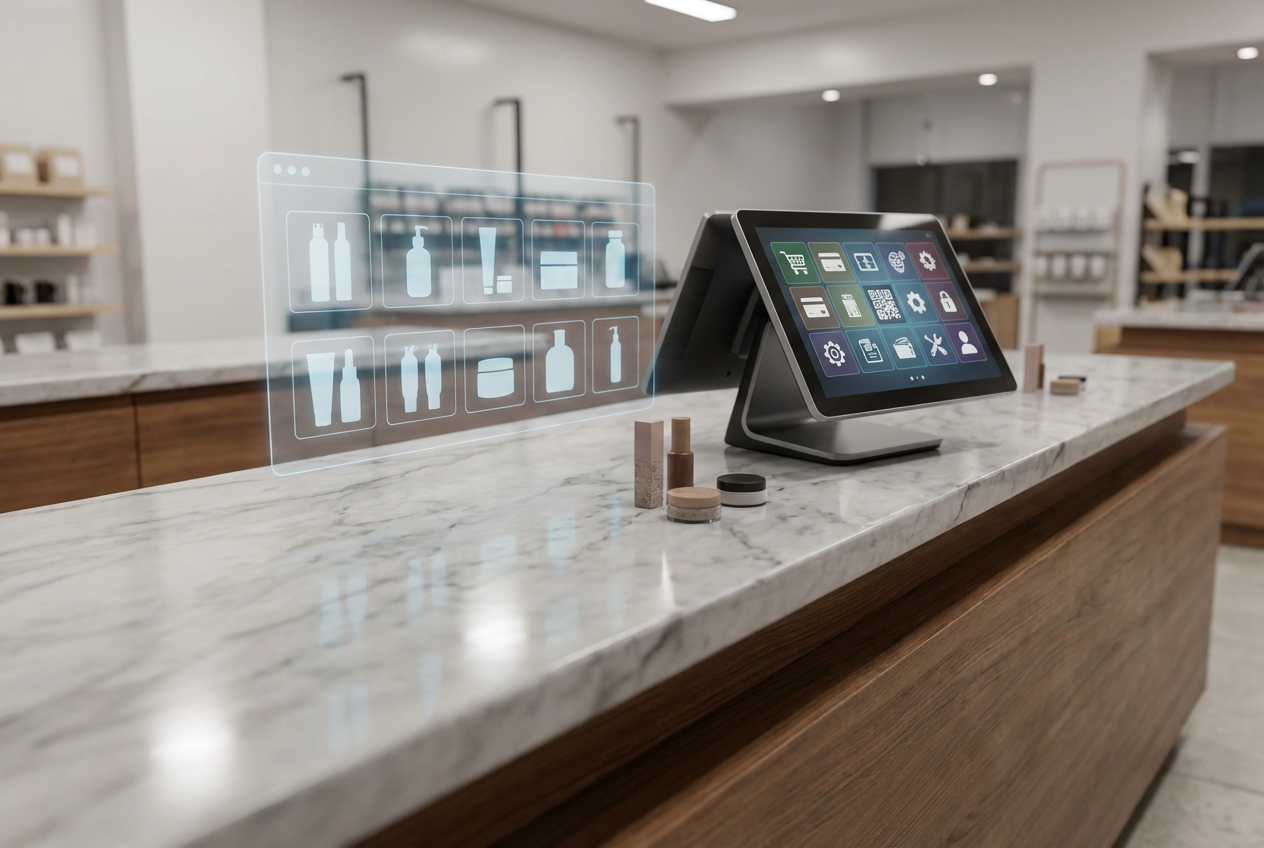Business operations often get buried under repetitive tasks that consume time but add little value. A task automation strategy removes this burden, freeing teams to focus on work that drives growth. This guide from ConnectPOS will explain what automation really means, how it works, and how it can improve everyday processes.
Highlights
- Task automation replaces repetitive manual work with automated workflows, saving time, cutting errors, and improving consistency across departments.
- Automation supports growth at scale by handling rising workloads without requiring extra staff, making it easier to adapt during busy seasons.
What is Task Automation?
Task automation is the practice of using technology to handle routine, repeatable work without human input. Instead of staff performing the same steps over and over, software completes those tasks automatically based on rules and triggers. This can include updating records, sending reminders, processing orders, or generating reports.
The difference between manual work and automated workflows is clear. Manual tasks depend on people remembering steps and entering information correctly. Automated workflows run in the background, ensuring consistency and speed. For instance, sending a confirmation email after a customer purchase can be set once and executed endlessly without extra effort.
There are also common misconceptions. Some believe automation replaces human workers completely, when in reality it supports them by cutting down on low-value tasks. Others think automation is too complex or expensive, yet many modern tools are designed with simple interfaces and no-code setups. Another myth is that only large enterprises benefit, but small businesses often see the most value since their teams have fewer hands to handle growing workloads.
McKinsey analysis found that fewer than 5% of jobs can be fully automated, yet about 60% of roles have at least 30% of activities that could be automated. This supports the point that automation helps people rather than replaces them.
In short, automation of tasks isn’t about removing people, it’s about giving them better ways to work.
Why Businesses Rely on Task Automation
Businesses deal with endless small tasks every day, and these often drain time and focus from higher-value work. The demand for speed, accuracy, and consistency has made task automation an attractive solution across industries. Recent reporting shows cost pressure is a real driver, with a Bloomberg survey indicating 45% of firms using AI are automating to reduce staffing costs.
- Time Pressure: Staff often spend hours on routine actions like updating spreadsheets, logging orders, or sending reminders. Automation removes this repetitive load. A retail manager, for instance, can skip manual stock counts because updates happen automatically through connected systems.
- Everyday Replacements: Tasks such as confirmation emails, payroll entries, or ticket assignments can be automated, freeing employees for more strategic roles. HR teams often use automation to handle onboarding forms, while customer service desks assign tickets instantly through rules-based workflows.
- Improved Accuracy: Manual input is prone to errors. Automated workflows perform steps consistently, keeping data reliable and processes on track. Retailers using ConnectPOS, for example, count on automated inventory updates to avoid overselling during peak seasons. Each transaction automatically updates stock levels across all sales channels, so available quantities remain accurate without manual intervention.
Automation delivers value whether it’s in retail, HR, sales, or IT. By taking care of the repetitive tasks in the background, businesses give their teams the freedom to focus on service, strategy, and growth.
Key Benefits of Task Automation
Task automation delivers more than convenience. It reshapes daily operations, helping teams save time, stay accurate, and adapt to higher workloads. For many businesses, it has become the backbone of smarter, more reliable processes.
- Time Savings: Automation frees employees from repetitive manual tasks. This creates space for creative work, planning, and customer interactions. For instance, retailers can automate inventory entry so staff spend more time guiding shoppers. McKinsey estimates that by 2030, activities representing up to 30% of hours worked in the US economy could be automated.
- Improved Accuracy: Automated systems follow predefined rules consistently, reducing mistakes that damage trust or compliance. Clean data also makes reporting more reliable. Banks and financial firms often use automation to keep transaction logs error-free.
- Stronger Collaboration: Shared automated workflows give all team members the same view of updates and timelines. This minimizes miscommunication and wasted effort. A sales team and a marketing team, for example, can both track the same automated lead pipeline.
- Cost Savings: Businesses cut the need for extra hours or staffing by automating repetitive tasks. Operations run more productively without adding payroll costs. Restaurants often use automated ordering systems to cut down staffing needs during rush hours.
- Scalability: Automation handles growing volumes of work without additional hires. Workflows expand smoothly as demand rises, keeping teams in control. Retailers using ConnectPOS, for example, rely on automated stock updates to handle holiday surges without hiring seasonal staff. The system syncs every sale across in-store and online channels in real time, so inventory counts adjust instantly without manual checks.
Real-World Applications of Task Automation
Automation is not a distant concept. It’s already at work in everyday business activities. From marketing to HR and IT, automated workflows help companies operate faster, more consistently, and with less stress on staff. In marketing alone, Statista data shows global marketing automation software revenue reaching about 6.62 billion dollars in 2024. This shows steady investment in automated campaigns and workflows.
►►► Optimal solution set for businesses: Multi store POS, Next-gen POS, Inventory Management Software (MSI), Self Service, Automation, Backorders
- Sales and Marketing: Campaigns often rely on automated emails, personalized messages, and lead scoring. These tools make it easier to nurture prospects and turn them into loyal customers without constant manual effort. For instance, e-commerce brands use behavior-based email triggers to follow up when a shopper abandons their cart.
- Human Resources: HR teams use automation to handle onboarding, payroll, and leave requests. New employees receive documents and instructions automatically, while pay runs and updates happen on time with fewer errors. Many companies now rely on HR software that sends reminders, tracks compliance, and manages forms without paper trails.
- Retail Operations: Inventory tracking and order fulfillment are prime examples. Stock levels adjust instantly after each sale, and low-stock items trigger notifications or reorders, preventing lost revenue during busy seasons. Retailers using ConnectPOS benefit because every in-store or online transaction updates inventory in real time, while reorder points generate purchase orders automatically when thresholds are reached.
- IT Management: Automation keeps systems updated, applies security patches, and monitors activity for risks. Instead of waiting for issues to appear, IT teams can rely on scheduled tasks and proactive checks. Cloud platforms often schedule overnight updates to avoid disruption during working hours.
These applications show how task automation cuts across industries and departments. Each workflow might look different, but the purpose remains the same: reduce repetitive work, improve accuracy, and allow staff to focus on higher-value responsibilities.
Best Practices for Task Automation Success
Automation works best when businesses approach it with clear goals and realistic steps. Companies that rush into automating everything at once often waste time and end up frustrated. Following these practices can make automation sustainable and effective.
Identify the Right Processes to Automate
Not every task is worth automating. Start with repetitive, rules-based activities that consume time but add little strategic value. Data entry, payroll calculations, or sending invoice reminders are common candidates.
For example, a retail store that automates stock notifications saves staff hours of manual checks each week, while ensuring shelves stay filled. Picking the right tasks first provides quick wins and shows teams the value of automation early on.
Set Clear Goals and Metrics
Automation should serve a measurable purpose. Is the aim to save time, improve accuracy, or cut costs? Defining success makes it easier to track progress and refine workflows.
For instance, a marketing team might set a goal to cut email preparation time by 30%. Measuring that outcome gives a clear picture of whether the automation setup is delivering value or needs adjustment.
Choose the Right Tools
There’s no shortage of automation software, but not all are equal. Businesses should select tools that fit their operations, integrate with current systems, and are simple enough for staff to use daily. A tool that requires heavy IT support often slows down adoption.
Imagine a small HR team trying to automate onboarding. A no-code tool with templates works better than a complex enterprise platform that demands weeks of training.
Start Small, Scale Gradually
Jumping into a full company-wide rollout usually leads to errors and resistance. Testing automation in one department or for one process is safer. Once it proves effective, the workflow can be scaled across other teams.
For example, a company might first automate leave requests in HR. When staff are comfortable, they can extend automation to payroll, performance tracking, and recruitment. This steady growth reduces risk and builds confidence.
Involve Teams Early
Employees are the ones interacting with these systems daily, so their input matters. Involving them from the start, providing training, and gathering feedback lowers resistance. When staff see that automation removes tedious work instead of threatening jobs, adoption increases.
A finance department, for instance, may resist automated reporting at first. But once they realize it saves hours of manual spreadsheet updates, they become strong supporters.
Integrate Across Systems
Automation should connect with other business tools, not sit alone. Linking it to CRM, POS system, HR, and accounting systems guarantees data flows smoothly across departments. Without integration, silos appear, and staff end up duplicating work.
For retailers, connecting a POS system with inventory automation means stock updates happen instantly across channels. This prevents overselling online when an item has already sold out in-store.
Monitor and Adjust
Automation isn’t a “set once and forget forever” tool. Workflows need regular reviews to stay relevant. Monitoring allows managers to catch errors, measure results, and refine processes over time.
A sales team, for example, may find their automated lead scoring needs adjusting as customer behavior shifts. Ongoing tuning ensures automation keeps supporting business goals instead of becoming outdated.
Maintain Security and Compliance
IBM’s 2024 Cost of a Data Breach report put the global average breach at 4.88 million dollars, up about 10% year over year. Automated workflows often involve sensitive data such as customer information, financial records, or employee files. Protecting this data is non-negotiable. Every automated process should include security safeguards and follow compliance standards relevant to the industry.
For instance, a retailer collecting customer emails for automated campaigns must comply with GDPR or local data privacy laws. This protects both customers and the business from potential risks.
When businesses follow these practices, task automation becomes more than a time-saver. It creates a strong foundation for growth, accuracy, and collaboration, helping companies expand their reach without overwhelming their teams.
Common Pitfalls to Avoid in Task Automation
Automation can be a game-changer, but mistakes in setup often waste time and reduce trust among employees. Knowing what to avoid helps businesses get the most from their efforts.
- Automating the Wrong Processes: Not every task needs automation. Trying to automate activities that change often or require human judgment usually causes more confusion than clarity.
- Overcomplicating Workflows: Complex rules and endless conditions make automation harder to manage. Keeping workflows simple makes them easier to maintain and scale.
- Ignoring Employee Training: Teams need to understand how automation works. Without training, employees may bypass workflows or misuse tools, which undermines results.
- Failing to Monitor Performance: Automation is not a one-time setup. Regular checks are needed to confirm processes still meet goals and remain aligned with business needs.
Avoiding these common errors ensures task automation delivers real improvements instead of becoming another source of frustration.
How ConnectPOS Supports Retail Task Automation
In retail, automation helps businesses cut down repetitive work, avoid errors, and stay responsive when customer demand rises. ConnectPOS is more than a point-of-sale system. It’s a platform built to bring automation into daily operations, from stock control to customer engagement, so retailers can save time and focus on growth.
Key automation-focused capabilities of ConnectPOS:
- Unified automation: Automates workflows for products, customers, content, and orders with API integration .
- Intelligent workflows: No-code automation to trigger actions and simplify complex retail processes .
- Personalized customer experiences: Tailors shopping journeys and campaigns to boost loyalty .
- Real-time inventory and store updates: Real-time stock sync, product visibility control, and bulk edits for pricing and categories .
- Efficient order control: Easy order tracking, clear notifications, and fraud-risk management .
- Connected systems: API-based integration with third-party apps and business systems .
- Precise customer segmentation: Groups customers by behavior for targeted campaigns .
- Dynamic discount scheduling: Launch promotions and timed deals automatically according to set time to drive purchases .
- Strategic group product pricing: Applies tailored pricing rules for bundles and product groups .
- Personalized email campaigns: Sends behavior-based emails to re-engage and retain customers .
- Targeted product promotions: Focuses campaigns on high-value products .
- Re-engagement campaigns: Personalized offers to bring back inactive customers.
With these tools, ConnectPOS allows retailers to simplify daily workflows, cut manual errors, and keep their teams focused on customers. It turns workflow automation into a natural part of running stores, making operations smoother during both regular days and the busiest holiday peaks.
FAQs: Task Automation
1. What types of tasks are best suited for automation?
Repetitive, rules-based tasks like payroll, invoicing, data entry, and stock updates are best, since they follow predictable steps and require minimal judgment.
2. Is task automation expensive for small businesses?
Not always. Many tools now use affordable pricing and no-code setups, letting small businesses automate workflows without investing heavily in IT resources.
3. How can automation improve customer experience?
It ensures faster responses, more accurate stock levels, and personalized campaigns. Customers enjoy smoother service and stronger loyalty through consistent, reliable interactions.
4. What tools are needed to start task automation?
Most businesses begin with simple platforms like POS, CRM, or HR software. These systems include built-in automation to simplify daily operations instantly.
5. How does automation help reduce errors in daily operations?
Automated workflows eliminate repetitive manual entry, ensuring consistent results. This prevents human mistakes, protects data accuracy, and creates more reliable outcomes across processes.
Final Thoughts
Adopting task automation is not about removing human effort but about creating smarter ways to work. It cuts repetitive tasks, improves accuracy, and frees teams to focus on meaningful contributions. From retail to HR and IT, automation drives consistency and growth while keeping staff engaged.
Retailers especially see the value during busy periods when speed and accuracy matter most. Automation helps maintain stock visibility, deliver fast checkout, and create personalized customer experiences that build loyalty. If you’re ready to simplify operations and grow with confidence, explore how ConnectPOS can transform your workflows. Contact us today to see how automation can fit into your business.
►►► Optimal solution set for businesses: Shopify POS, Magento POS, BigCommerce POS, WooCommerce POS, NetSuite POS, E-Commerce POS



